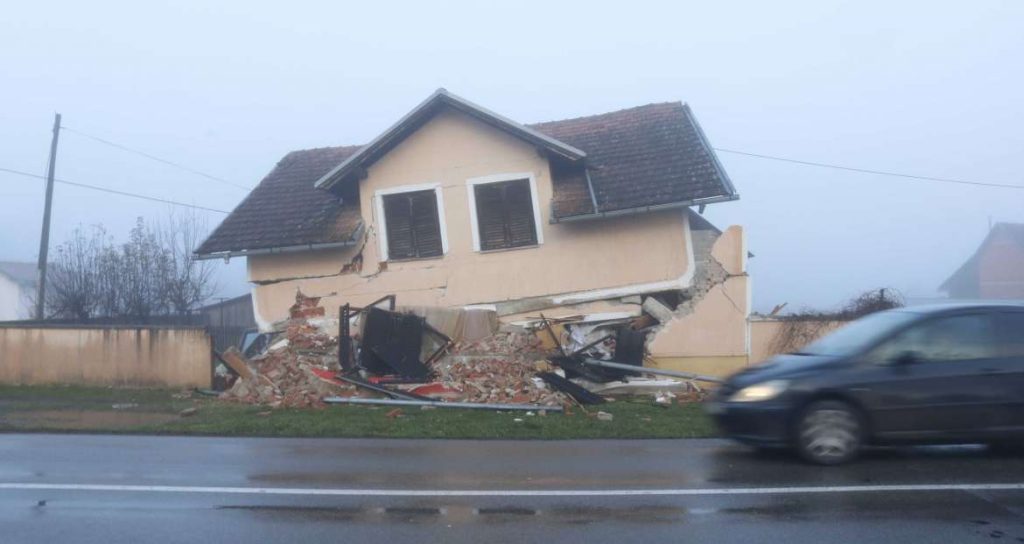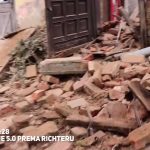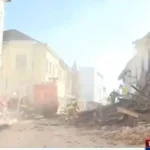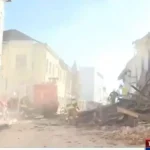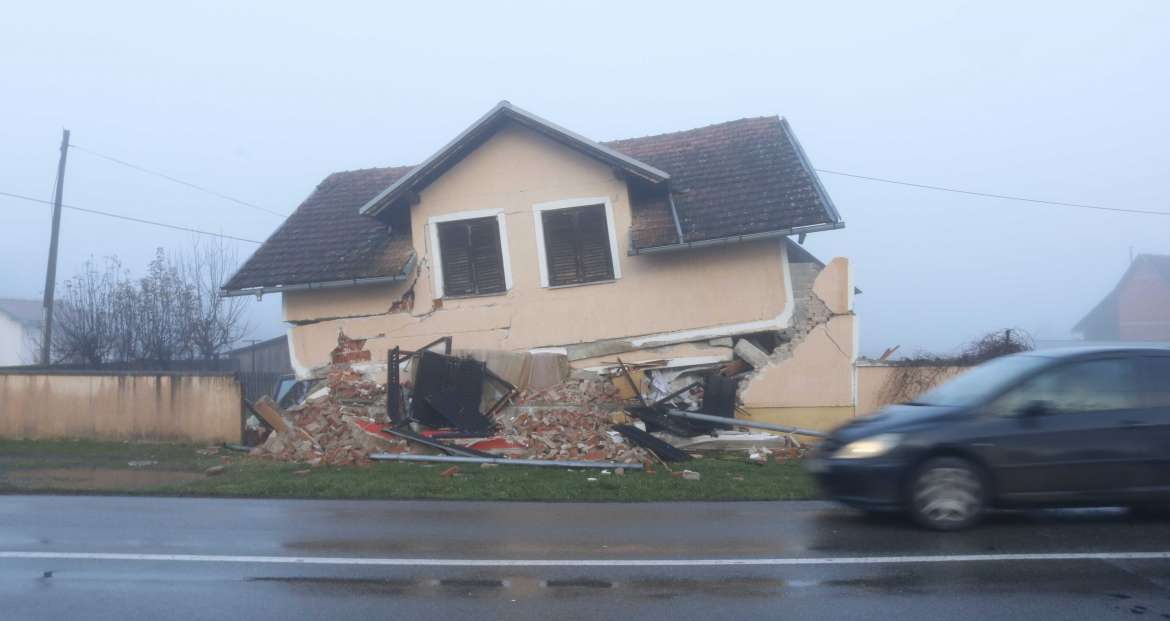
January 1, 2021 – As the tremors continue in Croatia, a look at earthquakes and building statics- how safe are we, and where?
After a short conversation with the architect Boris Mrdja, at his suggestion, I also talked to the statician Ivica Grkinić, in order to get an expert opinion and answers to some questions. A lot of people are in suspense these days, and perhaps the only thing we can control to some extent is the quality and quantity of information that can help us look at the situation more realistically and assess the risks. Accordingly, we can then decide which options are available to us.
- According to which regulations are buildings built in the last 50 years?
As early as 1964, temporary technical regulations, i.e. guidelines for the construction of facilities in the seismic area, were adopted. Then a huge step was made in increasing the security of houses and buildings. A newer version of these guidelines (for high-rise construction in seismic areas) was enacted in the early 1980s. The last regulations adopted were European regulations – Eurocode 8, and they have been applied since the first part of the 2000s. Each country adapts these guidelines to its climate and earthquake risk assessment. So quality regulations have been around for decades, the only question left is their rigorous application.
- Up to what earthquake strength are the buildings designed (Mercalli / Richter)?
In the Zagreb area, according to these guidelines, buildings are designed to withstand earthquakes of 8 and 9 degrees, respectively (depending on the assessment zone, Zagreb has 2 zones) of the Mercalli scale – i.e. 6.5 to 7.0 on the Richter scale.
On the one hand, these are the magnitudes to which we have reached the limit values in these earthquakes, but the predictions are that earthquakes stronger than this cannot occur in this area (i.e., the probability is very small). Informally, there is information that even slightly stronger earthquakes than the above have been done.
- How many weaker earthquakes can a building withstand? From 1 to infinity? Does material fatigue occur?
If there are no deformations on the object, or cracks, the object can withstand a large number of such stresses. Theoretically unlimited, but of course in practice there is this one earthquake after which the first deformation would be made, which would disturb the statics of the object. Therefore, all facilities should be thoroughly inspected in order to notice their actual condition in a timely manner. This is a broader issue of building maintenance, because in our country it is rare for someone to order it and it seems that there are no companies that specialize in this. Frequent action on the structure is of course not good and can lead to fatigue of the material which will then start to give way once, but it is difficult to say when this will happen, after 10, 100 or 500 such stresses. For these and other reasons, it is often written in the documentation that the building was built for a period of 50 years.
- Can it be checked and how, what earthquake strength can a building withstand? What about objects older than 50 and how can we know what they can handle?
In theory, this can be verified. It is necessary to make an architectural image of the building, analyze the materials and their quality (quality of concrete, mortar, brick, steel), record what is installed (slabs and beams) and examine some of the samples of materials. Sometimes it is possible to make an assumption about the quality of the material and go to static analysis and based on it to strengthen the structure and walls and install additional beams.
In practice, this rarely happens, because it is quite expensive and there are not many institutions that can implement it well. IGH and possibly the Faculty of Civil Engineering have the necessary laboratories for all analyzes (according to currently available information).
All older buildings should make such an analysis, but this is not realistic given that neither the owners nor the state are interested in the price. Mostly after such events, most of it comes down to house painting and superficial patching. A large number of old houses have long known the need to strengthen them, but no one will demolish them alone.
- What is the situation with bridges? Who checks and tests their durability and how often?
As with high-rise buildings, the necessary analysis can be made to examine the quality of concrete and steel. The bridges seem to be holding up well for now but need to be checked more regularly. And in their regulations set parameters for protection against iron corrosion and corrosion, which is further problematic in marine areas. The thickness of the protective layer plays a special role in them. Again, these analyzes can only be done by a few institutes in Croatia, but it seems that part of these processes is regulated at the state level.
- Is there an estimate of how many contractors did not work according to all regulations but made some savings at the cost of safety?
There is no rough data on this either. Until the war, most construction companies were large and somewhat regulated companies, and in the 1990s a large number of smaller companies emerged that were more difficult to control. All of them met the minimum requirements, but it used to happen that one engineer who was registered in the company, supervised 5 construction sites, which is of course very difficult to do in a quality way. In those years of spontaneous construction, there was a lack of professional staff in private companies. Also, in the past, buyers of buildings had their demands to move some walls or add windows, so they were sometimes met. The question is whether they made all the necessary analyzes for all such changes from the beginning. Of course, there were good companies then as there are today, and also today there are companies that work with questionable quality of performance. This is somewhat of a problem for the workforce as well, given that a significant number of people from the building have gone outside, and our companies are helping out with employees from Far Eastern countries who work very small hours.
- When the earthquake passes, if the building is not damaged, is it better to stay inside or go outside and does it make sense?
During an earthquake, of course, it is not good to leave the building immediately because we do not know what can fall on us. Once things calm down then the facilities that have suffered some damage should be evacuated. Stairs can be critical points. When you get out, you need to go to a meadow or clearing that is far enough from the building (a good part of the people stayed quite close to their building and in the parking lot in front of it). If the building has remained intact (which is sometimes difficult to assess from the inside) then there is no need to go outside. People are doing this because of potential new earthquakes, but unfortunately we can’t know if it will happen in the next half hour or an hour, a day or two, or in a couple of months or never again. While we are in the building, we should stick to the load-bearing walls, these are the ones that are thicker than 20 centimeters. These are facade walls but there are also interior ones that go in 2 directions. They are built of reinforced concrete, and take a lot of force on themselves, but unlike partition walls, they do not crack.
- What is the safety of underground garages, for cars and people?
Basement garages are with concrete walls and dug and breathe with the ground. On the lower part the displacement is smaller than on the higher floors. In principle, they are relatively safe from collapse and damage. Of course, there is only the risk that their exits will be closed due to extremely strong earthquakes due to collapse. The most critical is often the ground floor.
For more on the Petrinja earthquake, follow our dedicated section.
This article originally appeared in Medium, where you can find more of Aco’s articles.

